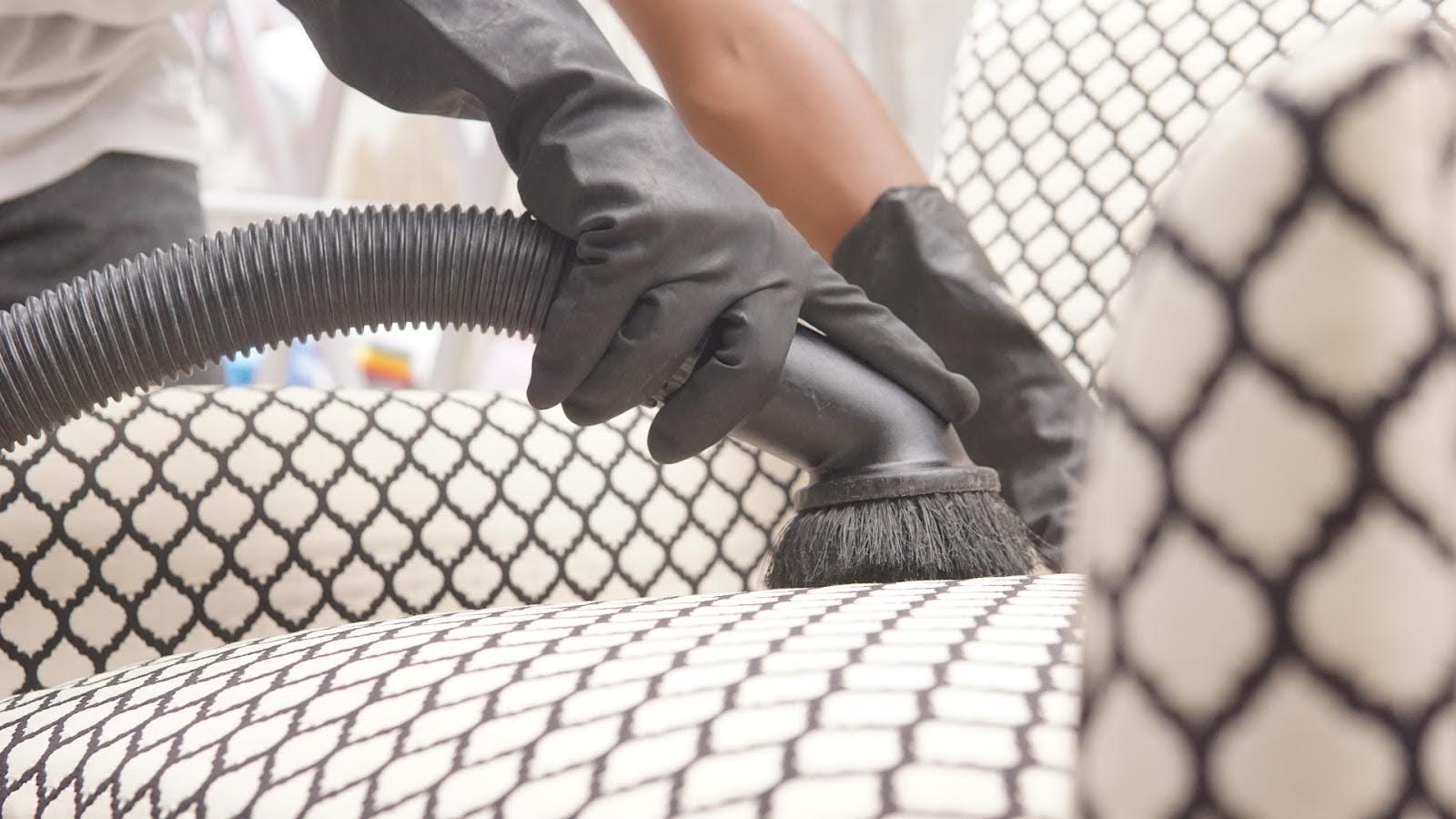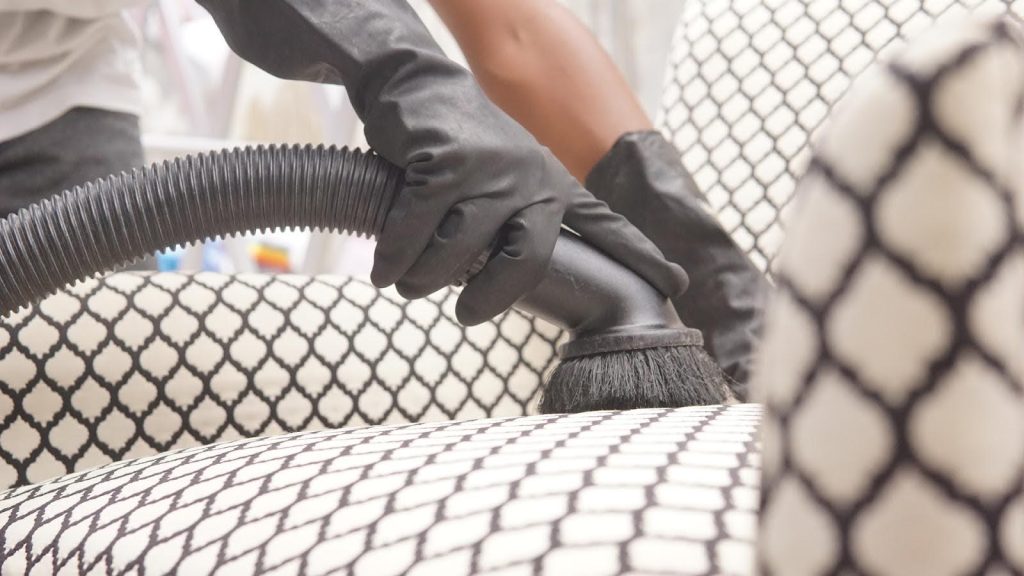Want to keep your upholstery clean and fresh? This guide provides practical tips on upholstery cleaning, including understanding cleaning codes, spot cleaning, and deep cleaning techniques. With these easy-to-follow steps, you can maintain your furniture’s appearance and extend its lifespan.
- Key Takeaways
- Understanding Upholstery Cleaning Codes
- Essential Supplies and Techniques for Cleaning of Upholstery
- Preparing Your Furniture for Cleaning of Upholstery
- Spot Cleaning Stains on Upholstery
- Deep Cleaning of Upholstery
- Preventing Future Stains and Dirt Build-Up
- Eliminating Odors from Upholstered Furniture
- Cleaning of Upholstery: Why Choose a Professional
- Megerian Rugs and Carpet Cleaning: Upholstery Cleaning Experts
-
Frequently Asked Questions
- How often should I vacuum my upholstery?
- What should I do if I don't know the cleaning code for my upholstery?
- Can I use baby wipes for spot-cleaning upholstery?
- How can I prevent future stains on my upholstery?
- How do I clean pet hair from my upholstery?
- Can I use a steam cleaner on all types of upholstery?
- What is the best way to eliminate odors from upholstery?
- To Learn More or Request A Free Estimate
Key Takeaways
- Understanding upholstery cleaning codes is essential to safely clean different fabric types without damage.
- Proper preparation, including vacuuming and spot cleaning, enhances the effectiveness of upholstery maintenance.
- Employing the proper cleaning methods, such as spot cleaning, vacuuming, and deep cleaning, ensures effective maintenance of your upholstery, preserving its appearance and extending its lifespan.
- Regular professional cleaning and preventive measures can significantly extend the lifespan and appearance of upholstered furniture.
Understanding Upholstery Cleaning Codes
Grasping the significance of upholstery cleaning codes is essential before initiating the cleansing cycle. The labels—W, S, W/S, and X—inform you which detergents suit your furnishings’ fabric. Not correctly understanding these indicators can damage your furniture coverings, so it is advisable to become acquainted with them.
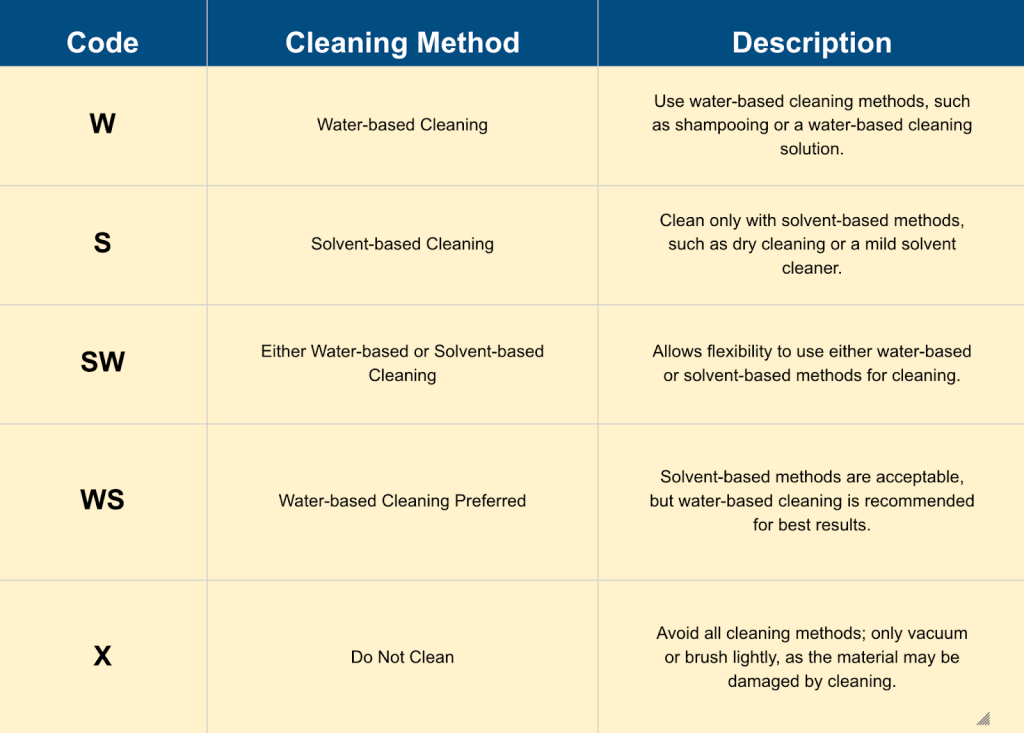
For precise guidance tailored to your upholstered piece’s fabric type, examine its care tag meticulously before performing any treatment procedures.
A ‘W’ signifies that water-based cleaners may be utilized cautiously without drenching the material. When marked with ‘S,’ it denotes a necessity for solvent use only, indicating that dry cleaning chemicals are required for safe cleaning. Possessing a ‘W/S’ label allows flexibility, permitting both water- and solvent-based cleaners—with an obligatory test on a discreet fabric segment to confirm no damage will occur upon application. An item tagged ‘X’ should solely undergo vacuuming or light brushing as neither liquid nor solvents must contact its surface area. Compliance ensures prolonged endurance and maintenance of aesthetic quality in upholstery.
Essential Supplies and Techniques for Cleaning of Upholstery
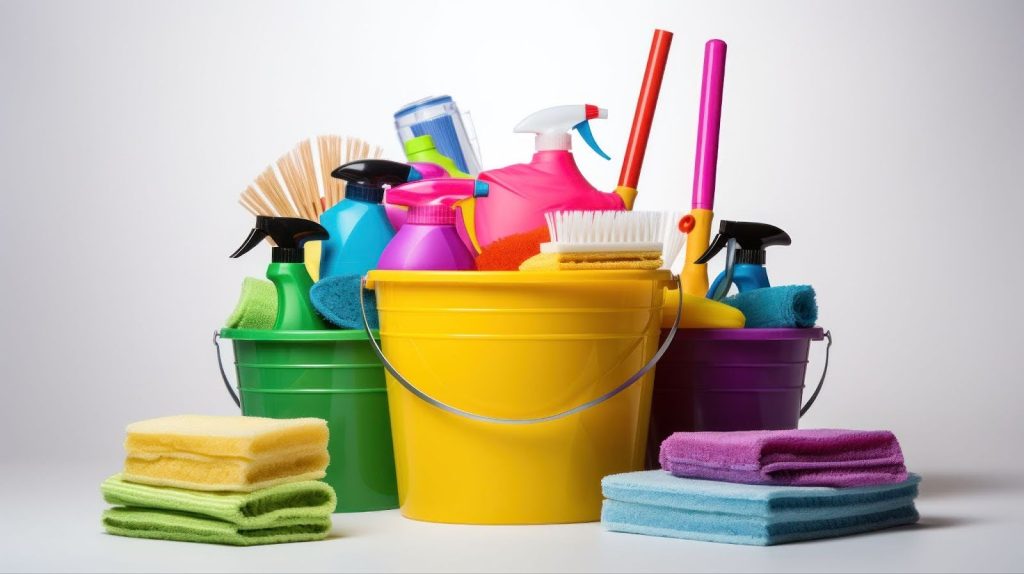
Having the right tools and techniques is crucial for effectively cleaning upholstery. Start with microfiber cloths, an upholstery cleaner, dish soap, and a vacuum cleaner equipped with both an upholstery attachment and a brush attachment. Microfiber cloths are excellent for cleaning surfaces without leaving streaks or residue. A vacuum cleaner with the proper attachments efficiently removes dirt and pet hair during routine cleaning. A lint roller is also helpful in collecting hair and grime from your furniture’s surfaces.
Several additional tools and materials can enhance your upholstery cleaning process:
- Soft-bristled brush: This brush gently agitates fabric fibers during spot cleaning, lifting dirt and stains without damaging delicate upholstery fabric.
- Crevice Tool: This tool reaches into the nooks and crannies of furniture where dust, pet hair, and debris accumulate, ensuring a thorough clean.
- Lint Roller: Complements vacuuming by picking up stubborn pet hair and loose dust that might have been missed.
- Fabric Sanitizing Spray: Kills lingering bacteria and eliminates odors. To avoid damage, ensure it is suitable for your upholstery fabric.
- Solvent-Based Cleaners: These are necessary for upholstery labeled with an ‘S’ cleaning code. They effectively remove stains without using water.
- Baking Soda naturally deodorizes and can refresh your cushions. Sprinkle it on the upholstery, let it sit for at least 30 minutes to absorb odors, and then vacuum it off.
Home DIY Cleaning of Upholstery Solutions & Commercial Solutions
Both homemade and commercial cleaning solutions are effective for maintaining upholstery. Homemade options often use accessible ingredients like dish soap, baking soda, and white vinegar, perfect for regular cleaning and spot treatments. These cost-effective solutions can be customized for specific stains or odors.
To create a DIY cleaner, mix equal parts white vinegar and warm water with a few drops of dish soap. This mixture can help treat stains and refresh upholstery without harsh chemicals. Always test on a hidden area first to ensure no damage occurs.
Recommended commercial cleaners include Woolite Carpet and Upholstery Cleaner, Bissell Professional Spot and Stain + Oxy, and Resolve Upholstery Cleaner. These effectively remove tough stains and odors and revitalize your furniture. Always test on a small patch of fabric first.
Preparing Your Furniture for Cleaning of Upholstery
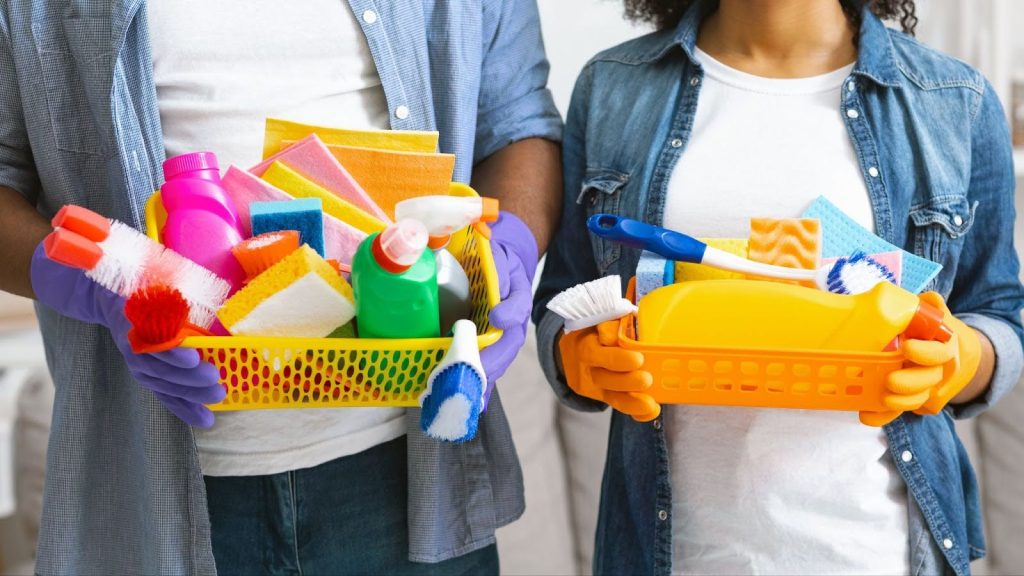
Detach all pillows and cushions to uncover concealed grime and debris in the nooks of your furniture. Inspect for damages that may require attention before commencing with cleaning.
Gathering all necessary cleaning supplies is essential before starting the cleaning process. These include a vacuum cleaner with an upholstery attachment, a soft-bristled brush, microfiber cloths, and a suitable cleaning solution based on your fabric’s cleaning code.
Additionally, consider the environmental factors in your cleaning area. Ensure the room is well-ventilated to facilitate quicker drying and reduce the risk of mold or mildew developing on damp fabrics. Position your furniture in an area with good airflow and natural sunlight, which can aid in drying and freshening the fabric.
For those dealing with pet hair, a lint roller or a slightly damp cloth can be invaluable in removing stubborn strands before you begin the more profound cleaning steps.
Vacuuming Upholstered Furniture
Vacuuming significantly benefits upholstery cleaning. Vacuuming removes dust and debris, laying the groundwork for a more thorough clean. Employing a vacuum cleaner outfitted with an upholstery attachment is vital to accessing every section of your furnishings and drawing out ingrained grime.
Ensure you cover all parts of the furniture during vacuuming, including cushions, back, and side areas. Use the crevice tool to reach into those narrow spots where dirt tends to gather. Conduct this cleaning regularly, ideally weekly, to maintain your upholstery’s cleanliness and prolong its life.
Spot Cleaning Stains on Upholstery
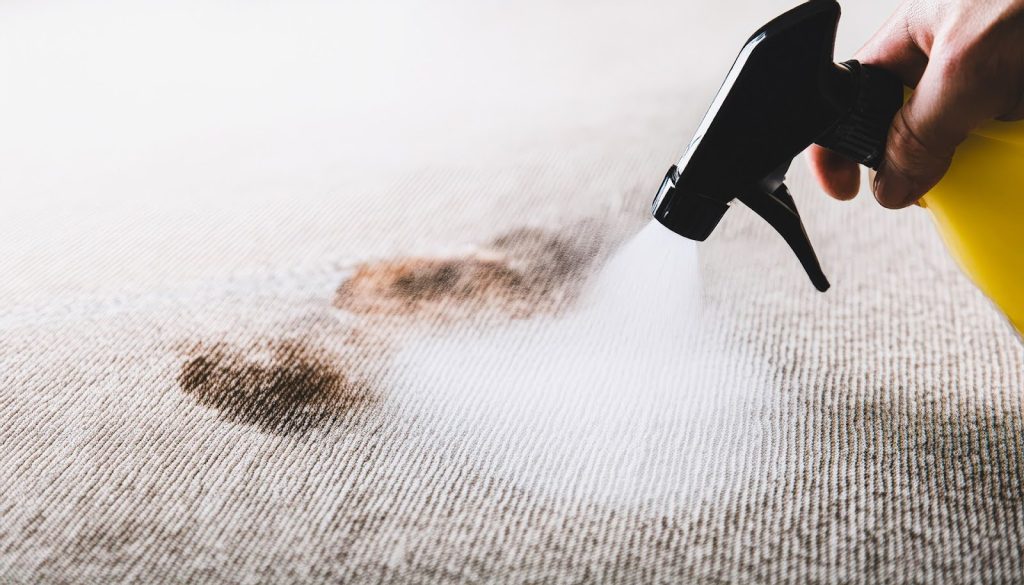
Spot cleaning maintains the appearance and integrity of your upholstery. Immediate stain removal can prevent them from setting in and becoming more challenging. Baby wipes can be effective for spot cleaning; test them on a hidden area first to ensure they do not cause damage.
Common Types of Stains and How to Clean Them
- Food and Beverage Stains: Blot the area with a clean cloth to absorb excess moisture from fresh spills. Mix equal parts white vinegar and water and apply it to the stain using a microfiber cloth. Blot gently until the stain lifts. A few drops of dish soap in the solution can enhance its effectiveness for tougher stains.
- Pet Stains: Quickly blot the area with paper towels to absorb as much moisture as possible. Clean the area with warm water and a few drops of dish soap. For lingering odors, sprinkle baking soda over the spot and vacuum it after 30 minutes.
- Ink Stains: Dab the stain gently with a cloth soaked in rubbing alcohol. Avoid rubbing, as it can spread the ink. Blot until the ink lifts, then rinse the area with a damp cloth and allow it to air dry.
- Grease Stains: Sprinkle baking soda or cornstarch on the stain to absorb the grease. Let it sit for 15 minutes, then vacuum it off. For remaining residue, use dish soap and water to blot the area.
- Wine Stains: Blot the stain immediately with a clean cloth. Apply club soda and blot again to lift the stain before it sets. Repeat as necessary until the stain is gone.
Deep Cleaning of Upholstery
Deep cleaning maintains the appearance and hygiene of your upholstered furniture. Check the manufacturer’s cleaning instructions to ensure compatibility with your chosen cleaning solution. A typical DIY solution is to mix one teaspoon of dish soap with one gallon of warm water to clean upholstery.
Apply this solution with a damp sponge or microfiber cloth, not oversaturating the fabric to avoid excess moisture. Rinse with a clean, wet cloth to remove any soapy residue that can attract dirt. Allow the furniture to air dry completely away from direct heat sources to prevent damage.
If your upholstery fabric is water-safe, consider using a steam cleaner for a more thorough deep cleaning. Steam cleaning removes stubborn stains, kills surface dust mites, and sanitizes the fabric. Follow the manufacturer’s instructions for the steam cleaner for your furniture to avoid damage.
Preventing Future Stains and Dirt Build-Up
By routinely vacuuming and conducting periodic deep cleaning sessions, you preserve your upholstery’s aesthetics and enhance its durability. This routine rids your furnishings of dust, allergens, and grime, which in turn contributes to a cleaner living space.
Pre-treatment solutions like Scotchgard for your upholstery can help ward off persistent stains before they take hold. Scotchgard creates a protective barrier that repels liquids and prevents stains from setting into the fabric, making it easier to clean spills and dirt. Covering your furniture with protective sheets can further safeguard against stains and wear. Enlisting regular professional cleaning services helps sustain your furniture’s appeal while prolonging its usability.
Eliminating Odors from Upholstered Furniture
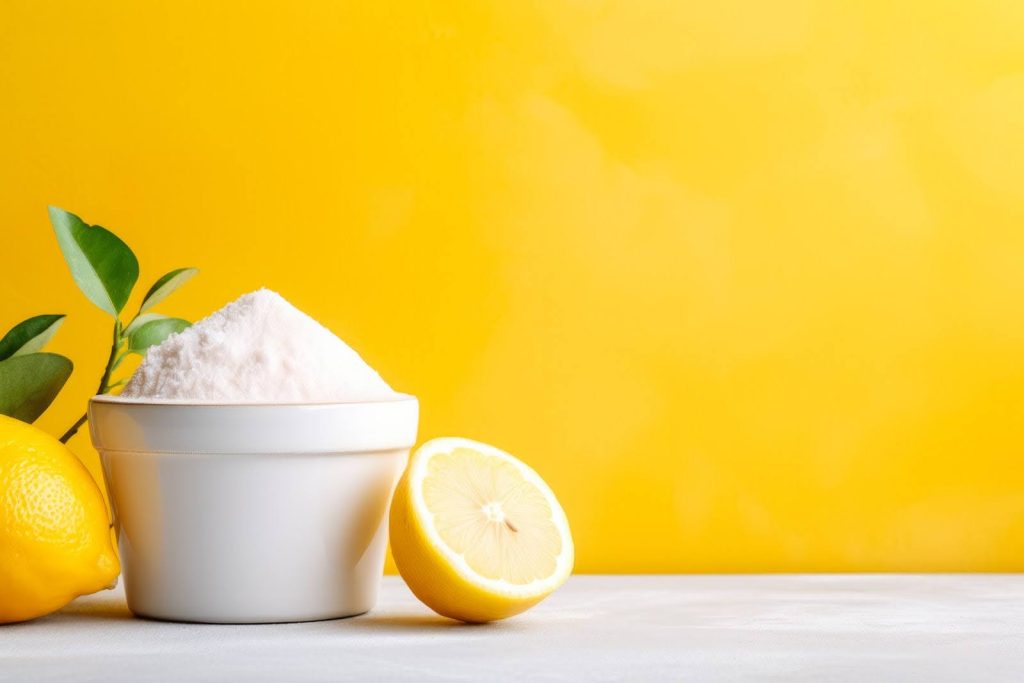
Odors can quickly make your upholstered furniture uninviting. Baking soda naturally deodorizes and can refresh your cushions. Sprinkle it on the upholstery, let it sit for at least 30 minutes to absorb odors, then vacuum it off with the upholstery attachment.
For more pungent odors, spray a mixture of white vinegar and water on the fabric. This solution neutralizes odors and leaves your furniture smelling fresh. After applying baking soda or vinegar, vacuum thoroughly to remove any residue and absorb odors.
Consider incorporating essential oils into your cleaning routine to tackle persistent odors further. Adding a few drops of essential oils like lavender or tea tree oil to your vinegar and water mixture can provide a pleasant fragrance while offering antibacterial properties. Test this mixture on a discreet upholstery area to avoid any potential damage.
Use an enzyme-based cleaner for an extra layer of deodorizing power. These cleaners break down odor-causing molecules at their source, eliminating the smell rather than just masking it. Enzyme cleaners are particularly effective for pet-related odors like urine or dander.
Cleaning of Upholstery: Why Choose a Professional
While do-it-yourself techniques can be helpful, enlisting the services of professional upholstery cleaners brings several benefits. These experts deliver a level of deep cleaning that may prove challenging to attain independently and are adept at effectively neutralizing unpleasant smells. Thanks to their extensive knowledge and access to advanced equipment, they can tackle a variety of fabrics and challenging stains with optimal results.
Engaging professionals is invaluable for eradicating persistent odors and stubborn stains that home methods fail to resolve completely. Their scope of work extends beyond mere cleaning. It also encompasses restoration and repair, contributing significantly to maintaining the durability and appearance of your furnishings.
Megerian Rugs and Carpet Cleaning: Upholstery Cleaning Experts
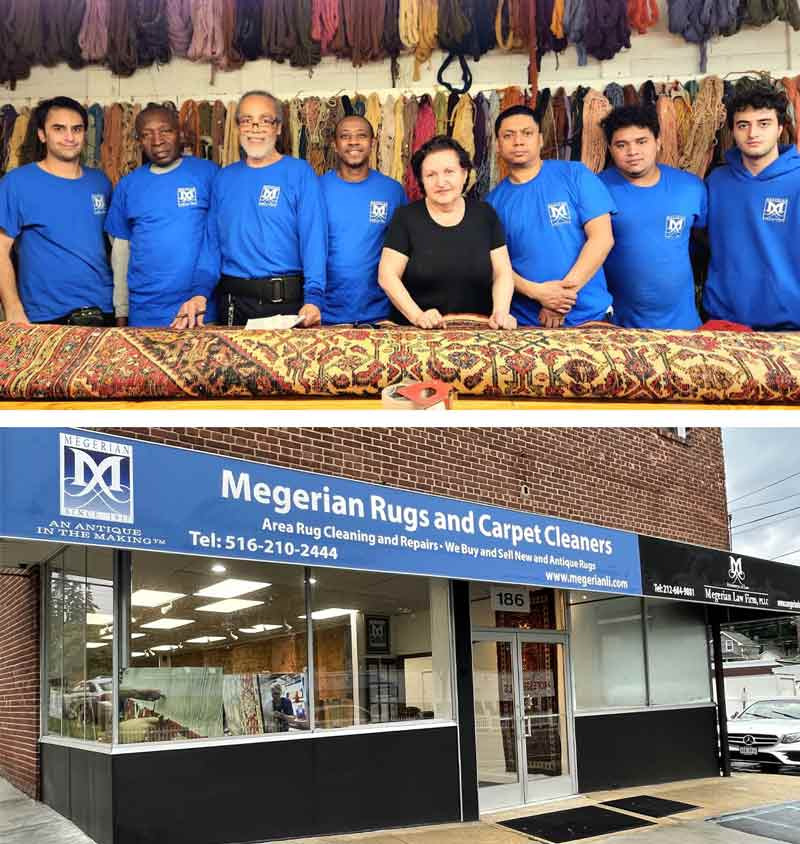
Established in 1917 in Long Island, NY, Megerian Rugs and Carpet Cleaning is a family-run enterprise acclaimed for its exceptional rug maintenance and restoration services. The company skillfully melds age-old artisanal skills with contemporary methods to provide outstanding results. With knowledge passed down through four generations, Megerian is synonymous with excellence in every aspect of its craftsmanship.
Their expert services include meticulous cleaning, restoration, and repair of rugs, carpets, and upholstery items—each executed precisely to ensure your valued pieces are well preserved by skilled hands. The Megerian Rugs and Carpet Cleaning team comprises highly trained professionals who take meticulous care to guarantee that every item is treated with the utmost respect and attention.
Frequently Asked Questions
How often should I vacuum my upholstery?
Vacuuming your upholstery once a week is essential to maintain cleanliness and prevent the buildup of dust and debris.
Regular care will extend the life of your furniture and keep it looking its best.
What should I do if I don't know the cleaning code for my upholstery?
If you are unsure of the cleaning code for your upholstery, check the care tag on your furniture for guidance.
If it is missing, seek advice from a professional cleaner to avoid potential damage.
Can I use baby wipes for spot-cleaning upholstery?
Yes, baby wipes can be used for spot-cleaning upholstery, but it is essential to test them on a hidden area first to avoid damage.
How can I prevent future stains on my upholstery?
To prevent future stains on your upholstery, pre-treat it with upholstery cleaners or use protective covers, and make regular vacuuming and professional cleaning part of your maintenance routine.
These measures will significantly reduce the risk of stains and dirt buildup.
How do I clean pet hair from my upholstery?
To remove pet hair from your upholstery, use a vacuum cleaner with an upholstery attachment for efficient cleaning. A lint roller or a slightly damp cloth can also help lift pet hair from the fabric. Regular cleaning prevents pet hair buildup and keeps your furniture looking tidy.
1. Severe Water Damage: If your carpet has been exposed to large amounts of water, such as from a flood or a burst pipe, professionals have the equipment and expertise to handle extensive water extraction and drying.
2. Persistent Odors: Lingering smells, especially from pet accidents or mildew, often require deep cleaning techniques only professionals can provide.
3. Mold and Mildew: If you notice any signs of mold or mildew, such as a musty odor or visible spots, it’s essential to call a professional immediately to prevent health risks and further damage.
4. Extended Wet Periods: If your carpet has been wet for more than 48 hours, the risk of mildew and mold increases significantly. Professionals can ensure that your carpet is thoroughly dried and sanitized.
5. Underlying Issues: Sometimes, water damage can affect the padding or subfloor beneath your carpet. Professionals can assess and address these hidden problems to prevent future issues.
Can I use a steam cleaner on all types of upholstery?
Not all upholstery is suitable for steam cleaning. Check the cleaning code on your furniture’s care tag before using a steam cleaner. If the tag permits water-based cleaning, steam cleaning can be effective for deep cleaning and sanitizing. For fabrics not compatible with steam, consider alternative cleaning methods.
What is the best way to eliminate odors from upholstery?
To eliminate odors from upholstery, sprinkle baking soda over the fabric and let it sit for 30 minutes before vacuuming. For stronger odors, a mixture of equal parts white vinegar and water can be sprayed lightly on the fabric. Ensure thorough drying to prevent excess moisture and lingering odors.


